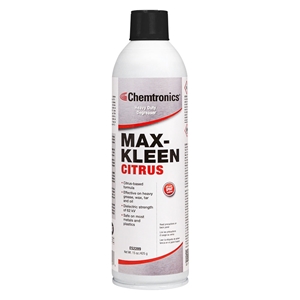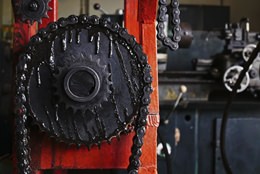Max-Kleen Citrus Degreaser
Citrus-based extra-strength degreaser
Max-Kleen™ Citrus is ideal for removal of all types of soils including oxidized grease, sludge, wax, tar and oil. The moderate evaporation rate increases the cleaning power for hard-to-remove soils. The low surface tension provides for superior wetting to clean in even the tightest spots. Max-Kleen™ Citrus is registered with the NSF as a C1 cleaner for use in food processing facilities.
Features & Benefits
- Citrus-based formula
- Engineered for fast removal of oxidized grease, sludge, wax, tar and oil
- Dielectric strength of 62 kV
- Does not contain chlorinated solvents
- Non-corrosive and nonconductive
- Safe on most metals and plastics
- NSF Registered — Nonfood Compounds/Code C1
Applications
- Mechanical Parts Cleaning
- Removal of tar and waxes from metal surfaces and parts
- Automotive, aerospace, and general fabrication industries degreasing
- Cleaning of hand tools and test probes
- Ideal for use with a wipe
| TDS | |
| REGS | |
| SDS | |
| Categories |
| Shelf Life | 5 yrs. unopened and 2 yrs. opened |
|---|---|
| Shipping Name | Consumer Commodity ORM-D |


